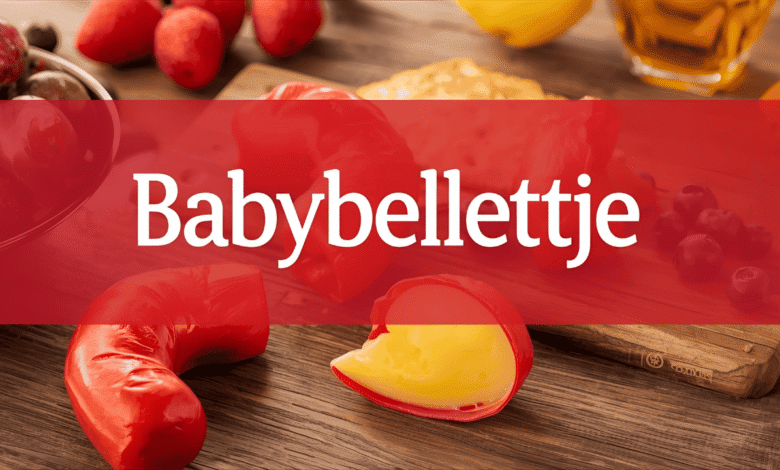Welcome to the delightful world of Babybelletje! This little cheese, wrapped in its signature red wax, has captured hearts and taste buds around the globe. But what lies beneath that charming exterior? More than just a snack, Babybelletje is steeped in rich history and cultural significance. Join us as we peel back the layers of this beloved treat, exploring its origins and how it brings people together across generations. Whether you’re a lifelong fan or new to its charm, there’s something magical about discovering all that Babybelletje represents in our lives today.
The Origin and History of Babybelletje
The Babybelletje has a charming origin rooted in the rich dairy traditions of Europe. This delightful cheese, encased in its signature red wax, was inspired by centuries-old cheesemaking techniques.
Historians trace its beginnings to France, where artisans crafted soft cheeses from cow’s milk. The name “Babybel” reflects both its small size and whimsical nature. It quickly gained popularity for its unique texture and taste.
As it spread across borders, Babybelletje became a beloved snack among families. Its portability made it ideal for lunchboxes and picnics alike.
In many households today, Babybelletje isn’t just food; it’s part of shared experiences—moments filled with laughter and love around the table. Through the years, this little cheese has evolved yet remained true to those comforting roots that bring people together.
The Significance of Babybelletje in Different Cultures
Babybelletje holds a charming place in various cultures, often symbolizing togetherness and comfort. In Dutch households, it’s a staple enjoyed during cozy family gatherings. The cheese’s playful packaging makes it appealing to children, creating joyous memories around the dining table.
In France, Babybelletje is not just food; it’s an everyday snack that embodies the country’s love for quality dairy products. Its small size fits perfectly into lunchboxes or picnics in parks.
Even beyond Europe, this delightful cheese has made its mark. In Japan and the United States alike, Babybelletje bridges cultural gaps by being both familiar and exotic at once. It invites people to explore new flavors while enjoying something universally beloved.
Thus, Babybelletje transcends mere nourishment; it weaves itself into daily rituals and celebrations across continents. Each bite carries stories of connection that resonate with diverse traditions and experiences.
How to Make Your Own Babybelletje at Home
Creating your own Babybelletje at home is surprisingly simple and rewarding. Start with high-quality milk—whole or raw works best for rich flavor.
Heat the milk gently, reaching about 190°F (88°C). Stir in a bit of vinegar or lemon juice to curdle it. Let it sit for around 10 minutes; you’ll see curds form as the whey separates.
Next, strain the mixture through cheesecloth to remove excess liquid. Once drained, add salt and mix well for seasoning.
Shape your cheese into small balls or rounds. For that iconic wax coating, melt some paraffin wax and dip each piece carefully until fully covered.
Allow them to cool on a baking sheet lined with parchment paper. Your homemade Babybelletje can now be enjoyed fresh or aged! Experiment with herbs and spices for a personal twist that speaks to your palate.
Creative Ways to Incorporate Babybelletje into Your Meals
Babybelletje isn’t just a snack; it’s a versatile ingredient that can elevate your meals. Try shredding Babybelletje and tossing it into salads for a creamy finish. The rich flavor complements greens beautifully.
You can also slice it thin and layer it on sandwiches or wraps. It adds an unexpected twist to the classic lunch routine, bringing both taste and texture.
For breakfast lovers, consider melting Babybelletje over scrambled eggs or avocado toast. The gooey goodness will have you coming back for more.
Experiment with mini charcuterie boards featuring Babybelletjes paired with fruits, nuts, and crackers. This makes for an impressive appetizer at any gathering.
Don’t shy away from using melted Babybelletje in pasta dishes or as a dip for veggies. Its playful nature allows you to be creative while satisfying cravings effortlessly.
Babybelletje as a Symbol of Love and Nostalgia
Babybelletje holds a special place in many hearts, often evoking memories of childhood. The small cheese rounds wrapped in vibrant red wax remind us of family picnics and school lunches shared with friends.
For many, unwrapping a Babybelletje is like peeling away layers of nostalgia. Each bite transports you back to simpler times, where laughter filled the air and worries were nonexistent.
It’s more than just cheese; it embodies love passed down through generations. Parents introduce their children to this delightful treat, fostering connections that deepen over meals.
In moments of celebration or comfort, Babybelletje finds its way onto tables everywhere. Whether it’s paired with fresh fruit or simply enjoyed on its own, each taste resonates with warmth and familiarity.
This little cheese has become a symbol not only of enjoyment but also of cherished relationships formed around food and shared experiences.
Conclusion: Why Babybelletje is More Than Just a Cheese
Babybelletje transcends the realm of mere cheese. It carries with it a rich tapestry of history, culture, and memory. For many, it evokes feelings of warmth and familiarity—reminding us of shared meals and cherished moments.
This small wheel wrapped in its iconic red wax is not just a snack; it’s an experience that brings people together. From festive gatherings to everyday lunches, Babybelletje serves as a bridge across generations.
As we explore its significance in various cultures, we find that this little cheese embodies love and nostalgia for families around the world. Whether enjoyed on its own or incorporated into creative dishes, Babybelletje offers versatility while retaining its heartwarming essence.
Crafting your own version at home can reconnect you with traditions or inspire new culinary adventures. The act itself becomes part of the beauty surrounding Babybelletje—a symbol not only of nourishment but also of unity and joy.
So next time you unwrap one, take a moment to appreciate what lies within: more than flavor and texture—it’s about connection, memory-making, and celebrating life’s simple pleasures through food.
